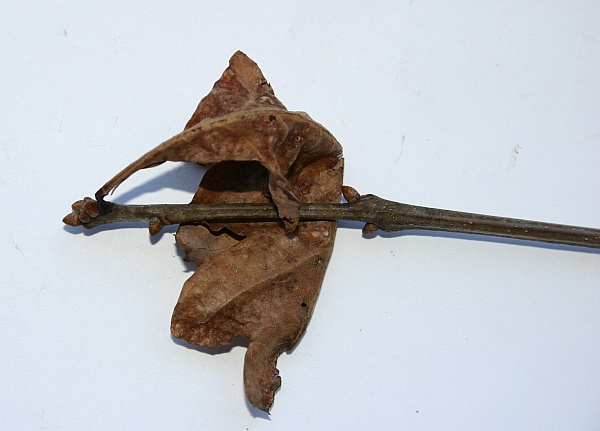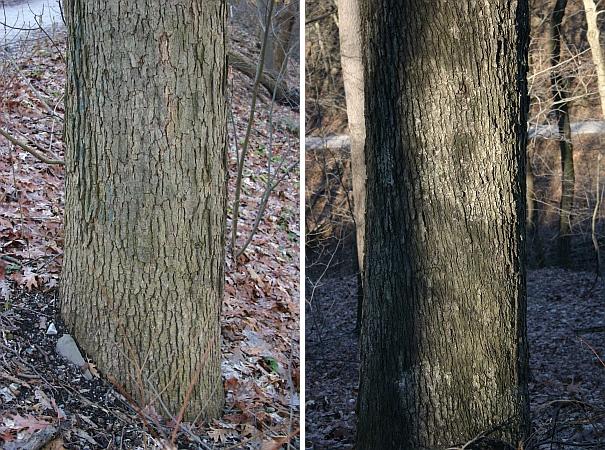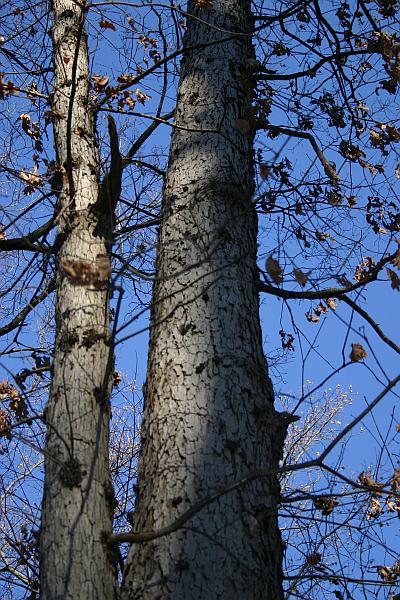
Continuing the oak theme, today’s tree is the Eastern White Oak (Quercus alba).
As I said last week, Pittsburgh’s natural habitat is the oak-hickory forest. In this part of North America oak species fall into two groups: reds and whites. Red oaks are typically found in oak-dominated forests. White oaks are so versatile they can grow in many habitats and have one of the widest ranges of any tree on the continent.
White oaks are majestic trees — as much as 150 feet tall, four feet in diameter, and 600 years old. Like all oaks they produce acorns and have clusters of buds at their twig tips. You can distinguish them from red oaks because their leaves have rounded lobes, their buds are smaller and blunter, their acorn cup scales are paler, knobby and the cup is not hairy inside, and their bark is paler, scaly and sometimes peeling.
The blunt buds, clustered at the twig tip, are pictured above. As you can see, a few dried leaves remain on the tree in the winter.
The bark at the base of the tree is a good hint to this tree’s identity because it looks as if part of it was rubbed off. Here are two examples. (It’s easier to see the “rubbed off” appearance in real life than in photos.)

Look up the tree trunk and you’ll see paler, slightly peeling bark and a few dried leaves.

White oaks are famous for producing bumper crops of acorns every 4-10 years. A single tree can produce 2,000 to 7,000 acorns so you can imagine the effect in an area with a lot of white oaks. One fall in the Laurel Highlands there were so many acorns that I found it hard to hike without slipping on them!
Squirrels eat acorns from both red and white oaks but they treat them differently. They bury red oak acorns and eat the white oaks’ right away. Red oak acorns are full of tannin (less palatable) and don’t sprout until their second spring. White oaks have less tannin and sprout in their first spring. Burying reds and eating whites makes sense. Red oak acorns can be placed in underground storage. White oaks would sprout before the squirrel could get back to them. Smart squirrels, eh?
(photos by Kate St. John)
In Girl Scouts, we learned to identify the White Oak, Red Oak, and Pin Oak this way:
Pin Oak — Leaves are thin, like a pin.
Red Oak — Leaves are pointy, like an arrow. The Indians (Red) hunted with arrows.
White Oak — Leaves are round. The settlers (White) hunted with round musket balls.
Maybe not PC these days but it sure was a good way to remember them!
“Smart squirrels, eh?”
Hey, I didn’t know you were Canadian. . . . eh?! 😉